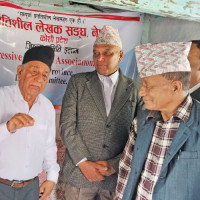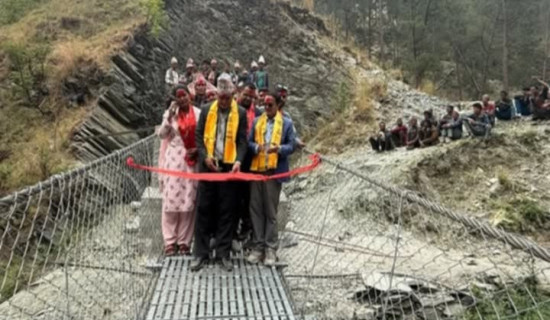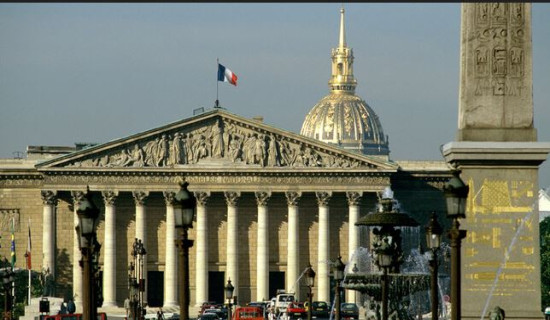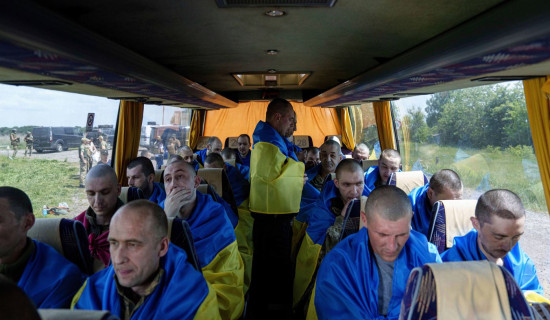- Wednesday, 28 May 2025
Kanwar’s ‘The Sovereign Forest’ opens at Nepal Art Council
By Aashish Mishra,Kathmandu, Dec. 12: Based on the conflict between local communities, government entities and corporations in Odisha, India, over control of agricultural lands, forests, rivers and minerals, ‘The Sovereign Forest’ appears to be an exploration of the concept of sovereignty over natural resources, a question of autonomy and ownership of the environment.
The films, pictures, newspaper cutouts and other items on display at this multimedia exhibition, which began at Nepal Art Council, Kathmandu, on Saturday, represent a narrative of power and control within Odisha’s natural landscape.
They show how the commercialisation of nature has made people helpless and voiceless in their land and has made them targets for mafias, politicians and profit-seeking organisations for simply asking that the place they have inhabited and protected for generations not be desecrated.
Through films, texts, books, photographs, seeds and more featured in the exhibition, artist Amar Kanwar, in collaboration with the Odia magazine Samadrusti, its editor and social activist Sudhir Pattnaik, and graphic designer and filmmaker Sherna Dastur, implores the viewers to understand the links between crime, politics, human rights and ecology. ‘The Sovereign Forest’ has been brought to Kathmandu by photo.circle. It is scheduled to run at the Art Council till March 31, 2024, and is accessible to the public from 11 am to 7 pm. There is no entry charge.
As per a press release issued by photo.circle, the forcible displacement of indigenous communities and peasants has been a brutal cycle of life in Odisha since the 1950s. In the past 25 years, several mountain ranges, wilderness areas and agricultural lands have been sold or leased for commercial use.
The release adds that a series of local resistances by peasants, fisherfolk and tribal communities emerged. But this resistance faced police repression and violence by local mafias.
Anwar began documenting this situation in 1999. His documentation is what ‘The Sovereign Forest’ is built on.
‘The Scene of Crime,’ a film that is also part of the exhibition, is particularly poignant as it captures “a war by the state against its own land and people,” the press release quoted Kanwar as saying.
‘The Sovereign Forest’ is a presentation deeply rooted in the socio-political landscape of Odisha. But, Monal Bhattarai, a visitor to the exhibition, felt that the issues raised were also relevant to Nepal. Talking to The Rising Nepal, she said that the themes of development, agriculture, deforestation and environmental exploitation were pertinent for Nepalis too.

















